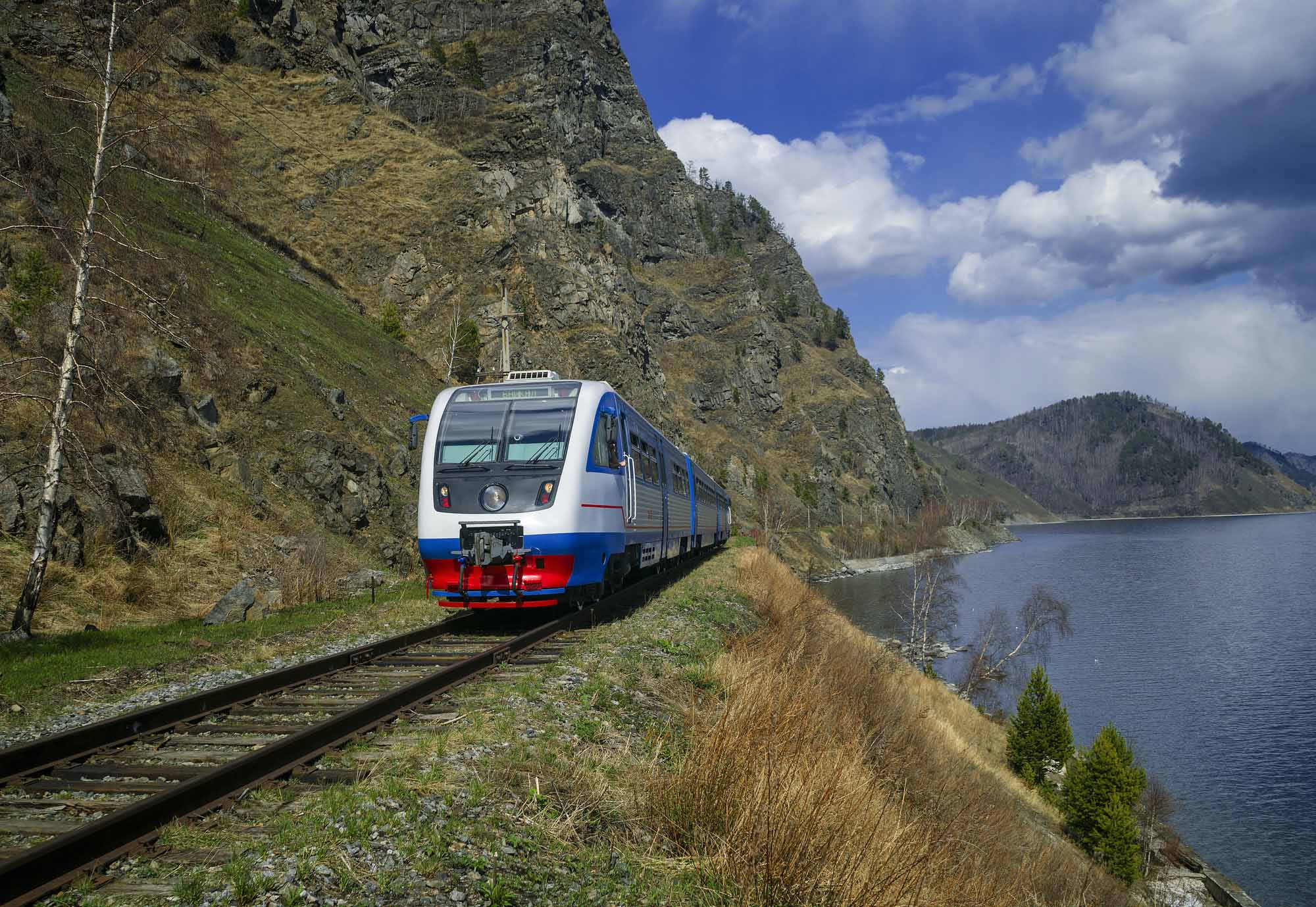
Trains of Trans-Siberian Railway usually are divided into two categories: regular trains and special charted tourist trains. The latter are luxury trains such as Tsar’s Gold, Golden Eagle and Imperial Russia. There are several sleeper compartment categories on these trains, most of which have own bathroom. Travelling on a tourist train is a package journey which includes accommodation, full board and excursions in cities and places where the train stops. It’s very convenient, but sometimes such a journey can be expensive.
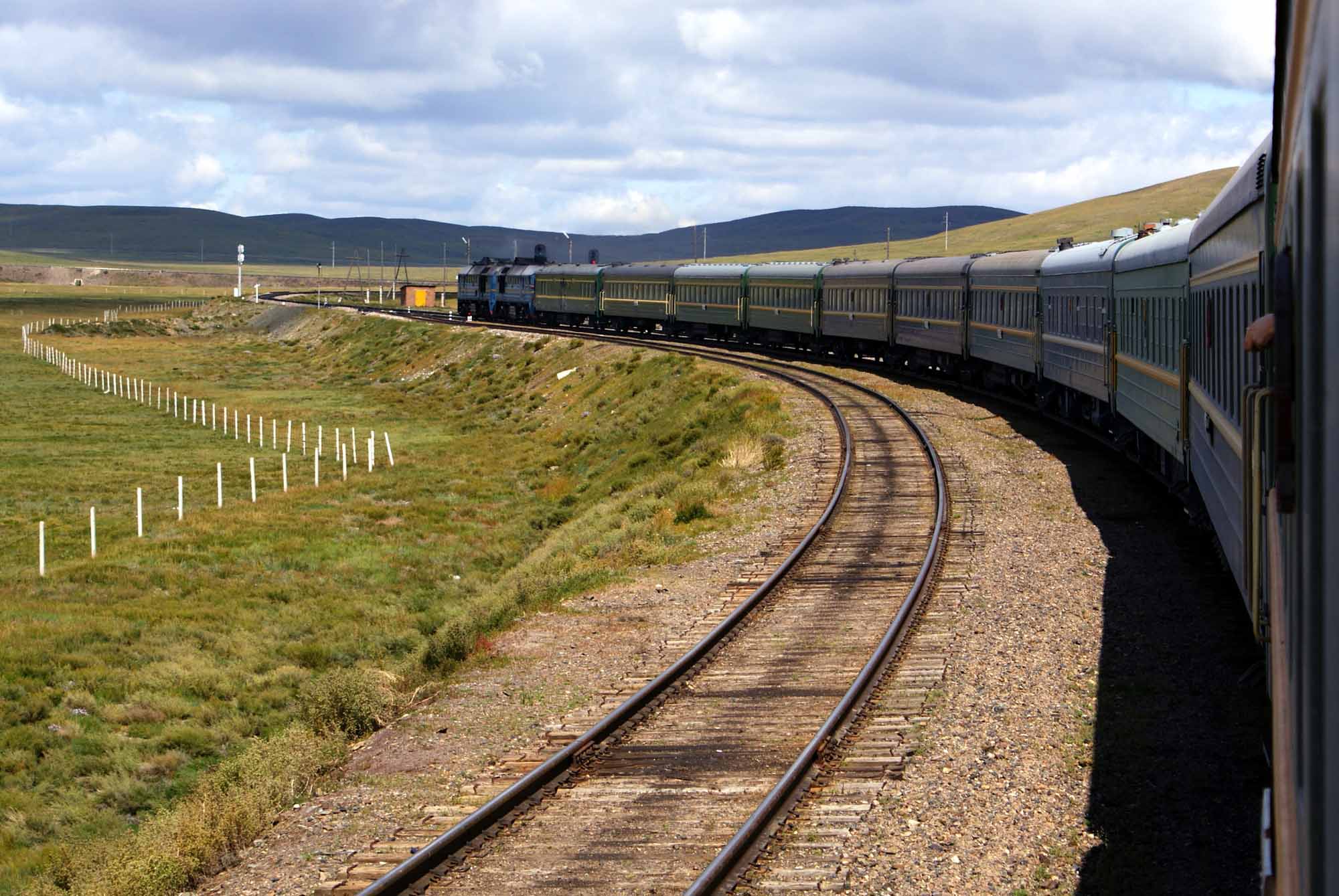
Another option can be travel on regular trains. There are two types of regular trains – branded trains and budget trains. The first ones feature higher level of comfort and are more expensive. Besides, 1st class compartments and dining cars are usually only on branded trains. Branded trains have a number and a name while budget trains have only numbers. The most famous regular branded train on the Trans-Siberian Railway is train# 002/001 called “Rossiya”. It operates on the 9288 km long route between Moscow and Vladivostok. It will take you 7 days to make a non-stop journey from Moscow to Vladivostok or vice versa on this train.

There are sleeper carriages with compartments of three classes on Russian regular trains. First class compartments or “SV” are separate compartments that accommodate 2 people. The cabin consists of two bunks and a folding table. Other amenities of the compartment are personal reading lights, storage space under the lower bunks, and a sliding door. Usually there is also a mirror and sockets. The bed linen is included in the ticket price. The meal is also often included on 1st class, but it can be only 1-2 meals for the whole journey included. The service in 1st class compartments often includes also Russian newspapers and a hygienic set. There are two WC cabins on the 1st class carriage.
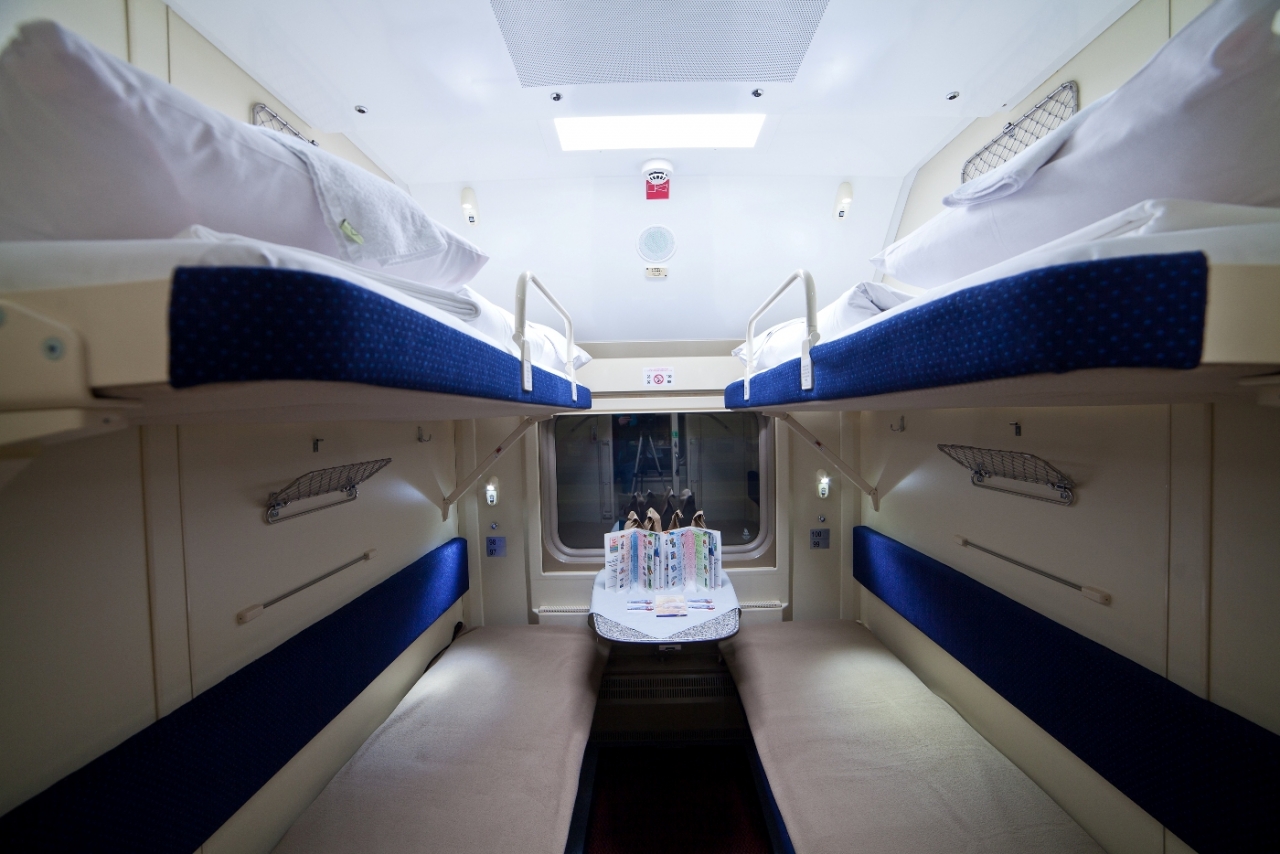
Second class compartment or “Coupe” is a separate quadruple compartment with four bunks (2 lower and 2 upper), a folding table and a sliding door. Among other amenities are personal reading lights, storage space and sockets on some trains. There are two WC cabins on the 2nd class carriage. Some trains offer ‘female only’ and ‘male only’ compartments of 1st and 2nd class.
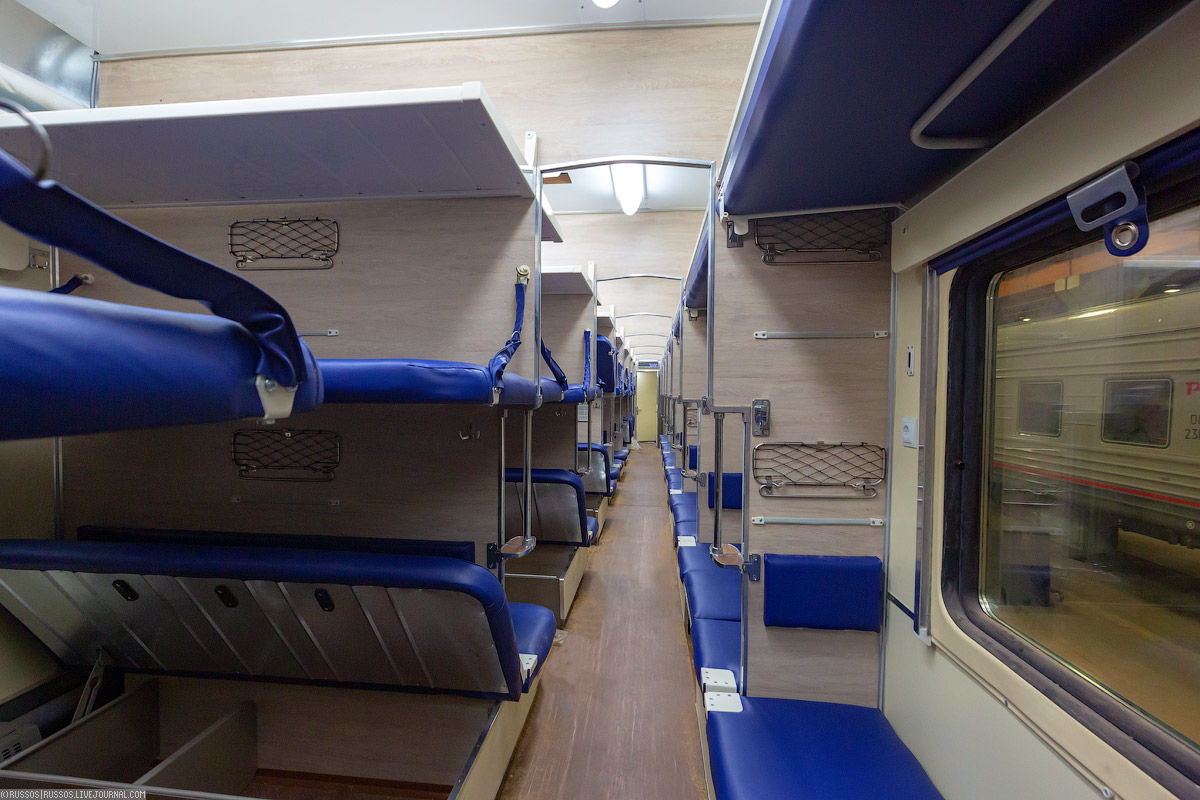
A third class carriage or “Platskart” is an open-space carriage and consists of 54 bunks, arranged in bays of 4 (2 lower and 2 upper) on one side and bays of 2 (1 lower and 1 upper) on another, with an aisle between the two sides. The side bunks are over and under the window. Lower side bunk can be transformed to a table and two seats. There are two WC cabins on the 3d class carriage. A third class carriage is the cheapest option, but there is no privacy in such type of carriage and it can be rather noisy there. So travelling in the third class is a choice of those who value economy more than comfort.
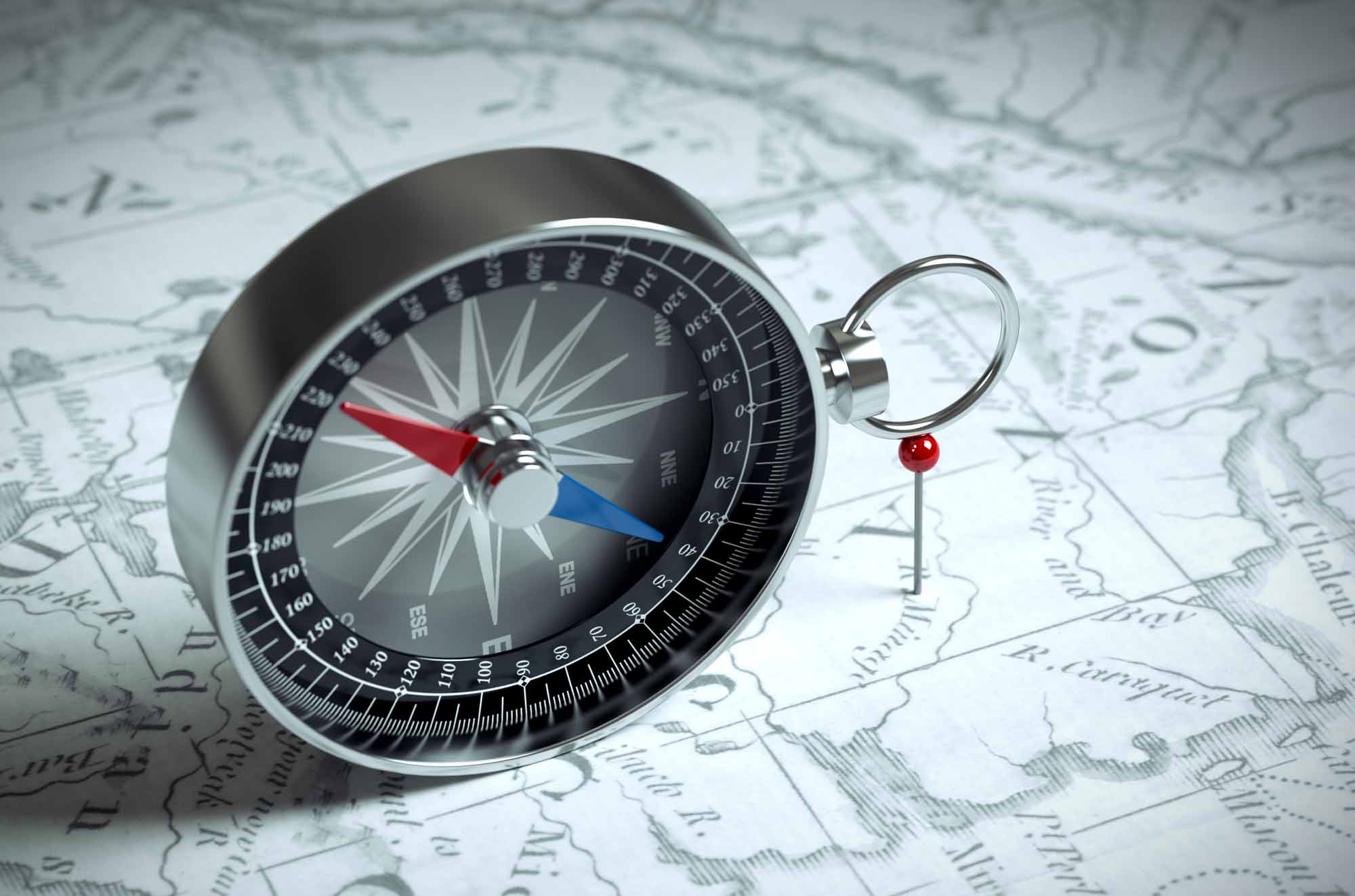
1. Plan carefully your route in advance as there are different possibilities to experience the Trans-Siberian Railway. We would recommend you to make a couple of stops on the route at most interesting cities such as Kazan, Yekaterinburg, Novosibirsk, Krasnoyarsk, Irkutsk, Ulan-Ude, Ulaanbaatar, Khabarovsk. 2. Please arrive to platform beforehand. Russian trains depart mostly on time indicated in your ticket, not later. 3. When boarding have your train ticket, passport and immigration card ready. The documents are checked by carriage attendant when boarding.
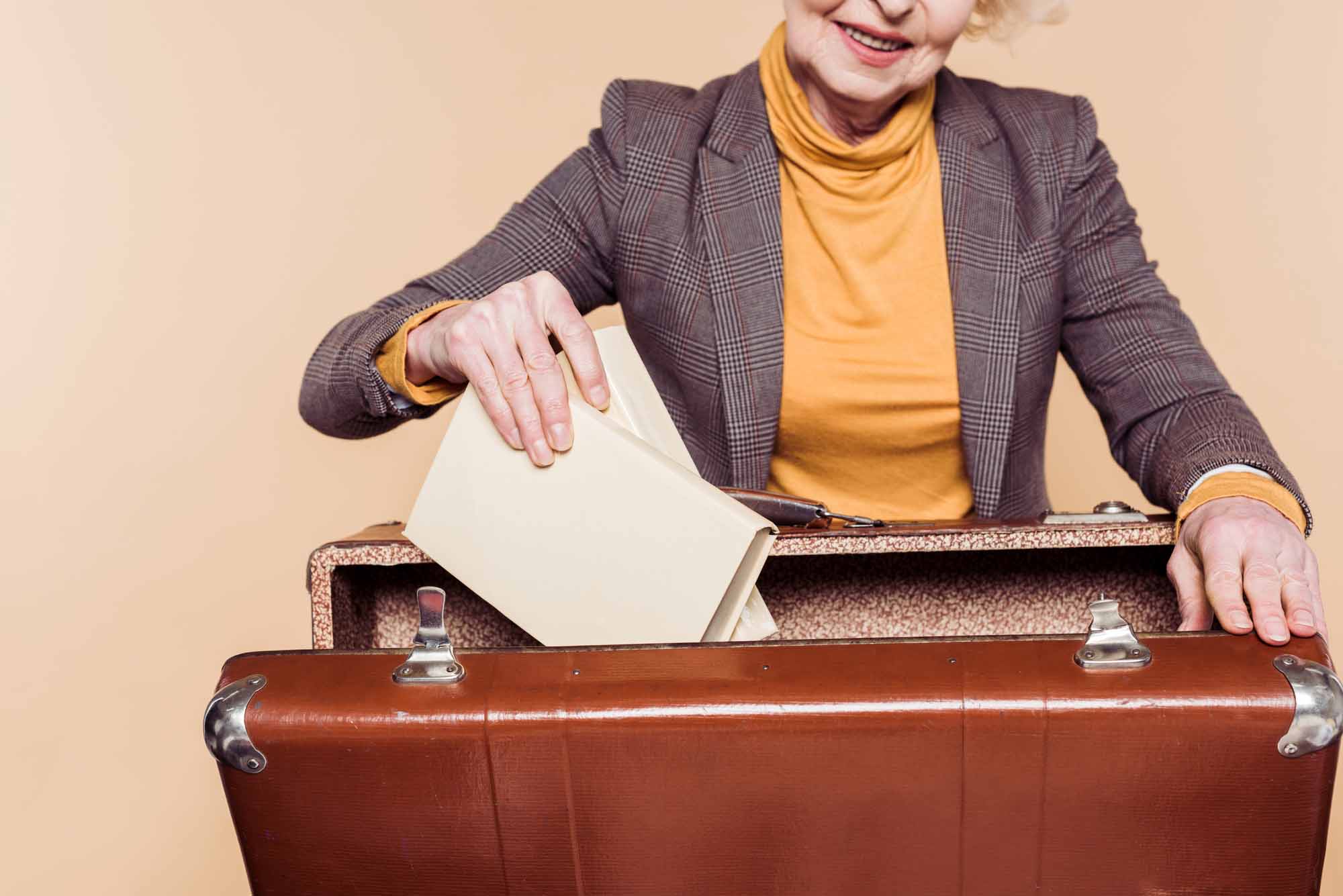
4. Don’t take with you on board large suitcases as the compartments are not big and do not have much space for big luggage. Pack your suitcase with the things you really need. 5. Wear on train comfortable clothes. For winter will be good a pair of loose cotton trousers, a t-shirt, light sweater, socks and slippers. In summer, a t-shirt and shorts and slippers will be good. 6. Prepare entertainment for you during a long Trans-Siberian journey. Bring a book, load up your smartphone with your favorite playlists, podcasts, games, TV series. If you are travelling with a friend cards and table-top games can be a good idea. 7. Bring a medical kit with the medicine you may need and your personal hygienic kit including tooth brush and paste, wet wipes, sanitizer, toilet paper.

8. Bring lots of snacks with you. A restaurant carriage is not on all trains and besides if you are on budget visiting the restaurant carriage will be expensive for you. You can buy snacks from food kiosks at the stations where train will stop for a longer time. Some snacks and drinks you can buy from the carriage attendant, but they are usually overpriced. In some new carriages there are vending machines as well. 9. Bring a cup with a lid or thermos along with tea bags, instant coffee, noodles or cup-a-soup with you. At the beginning of the carriage there is a pot with hot water which you can get for free if you have your own cup. Some tableware (such as teaspoon, fork, knife and plastic food container) can be also useful for you if you plan self-catering. Remember to keep your drinks in cups with a lid when the train is moving.
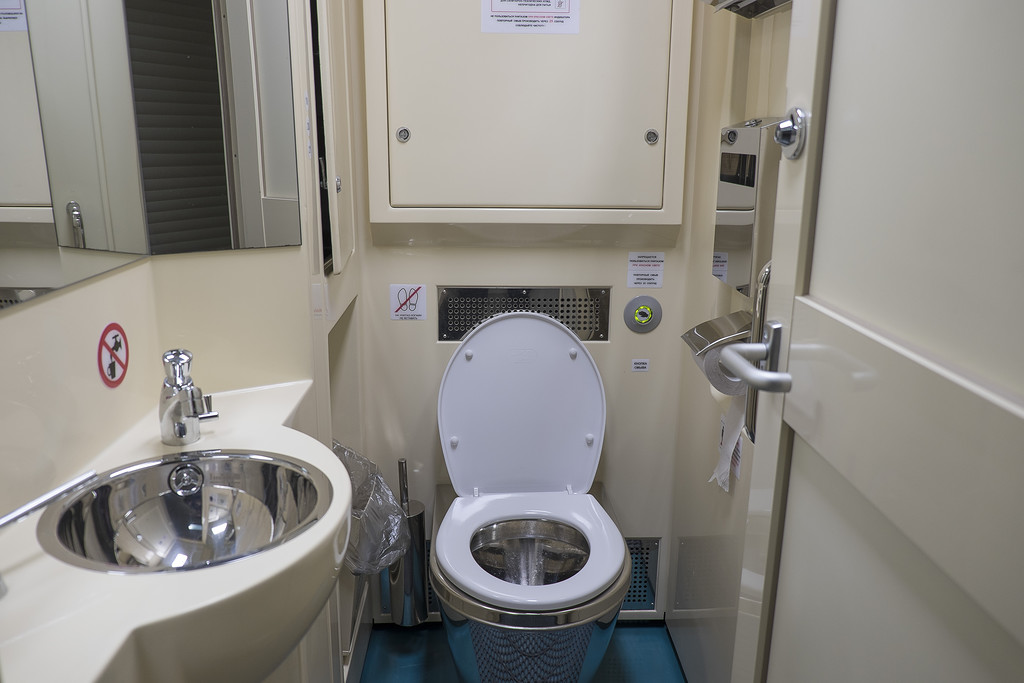
10. In each carriage there are two toilets on each end. New carriages normally have bio toilets which you can use anytime. Toilets in old carriages are locked shortly before, during, and shortly after most station stops. There is usually a schedule showing these closures at toilet doors. 11. Mostly Russian long distance trains don’t have shower in the carriage. Only new carriages have a combined toilet and shower cabin, but such carriages are rare. Though on some trains there is a shower cabin for the staff, and you can use it against a fee. You should ask your carriage attendant. Sometimes there are showers at big train stations which you can visit against a fee if stopping time allows.
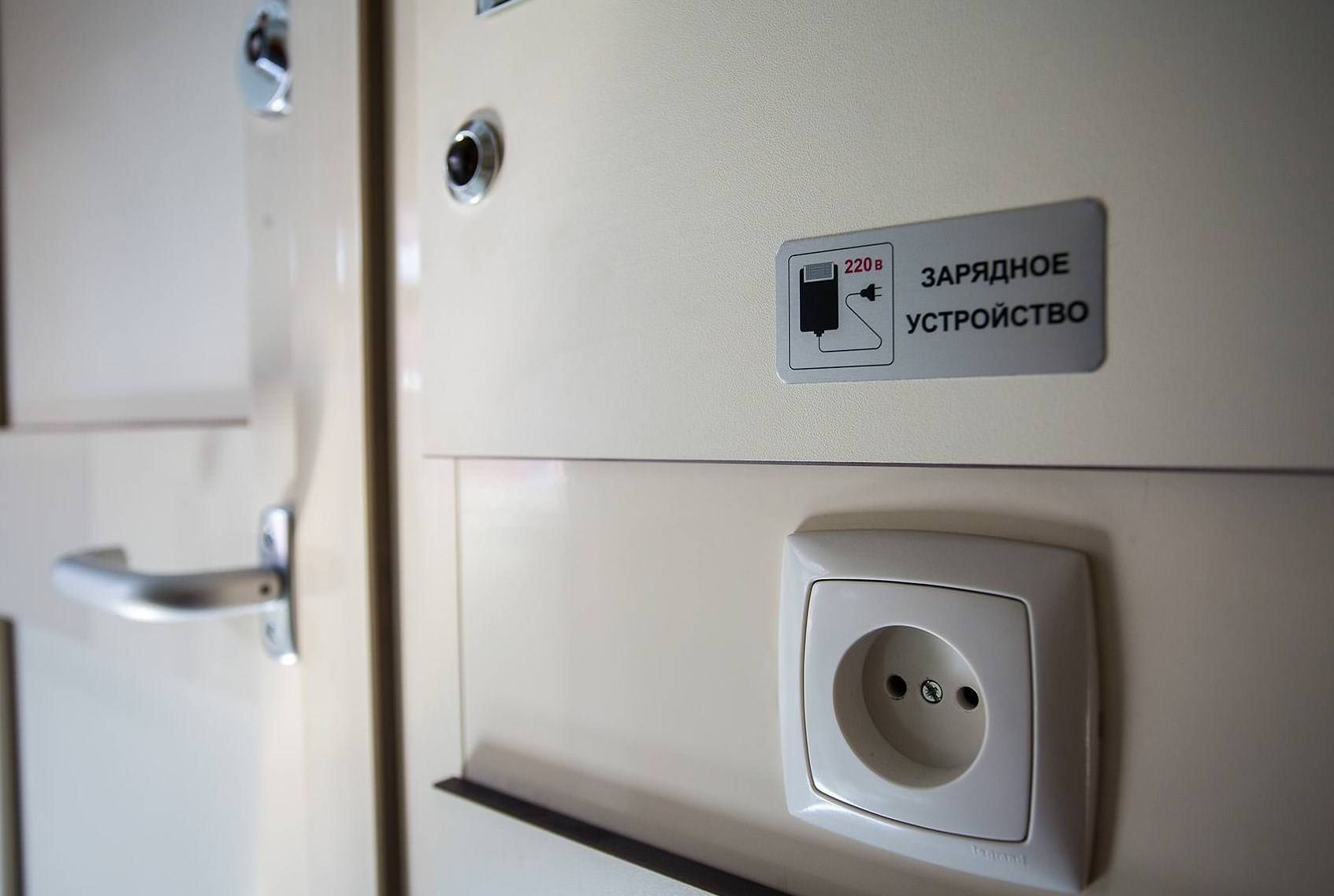
12. In each carriage there are outlets for charging your gadgets. New carriages normally have sockets or USB ports for each place (sometimes even in 3d class) or at least one socket per a compartment. Old carriages usually have sockets only in the hallways outside of compartments. Unfortunately you will not know which carriage you’ll get until you have boarded the train. 13. Learn basic Russian phrases and get to know Cyrillic alphabet or at least download Russian dictionary or translation apps and add Russian keyboard to your smartphone as well. Most of the signs during your long journey will be in Russian only and the chance your fellow passengers and carriage attendant will speak good English is low.
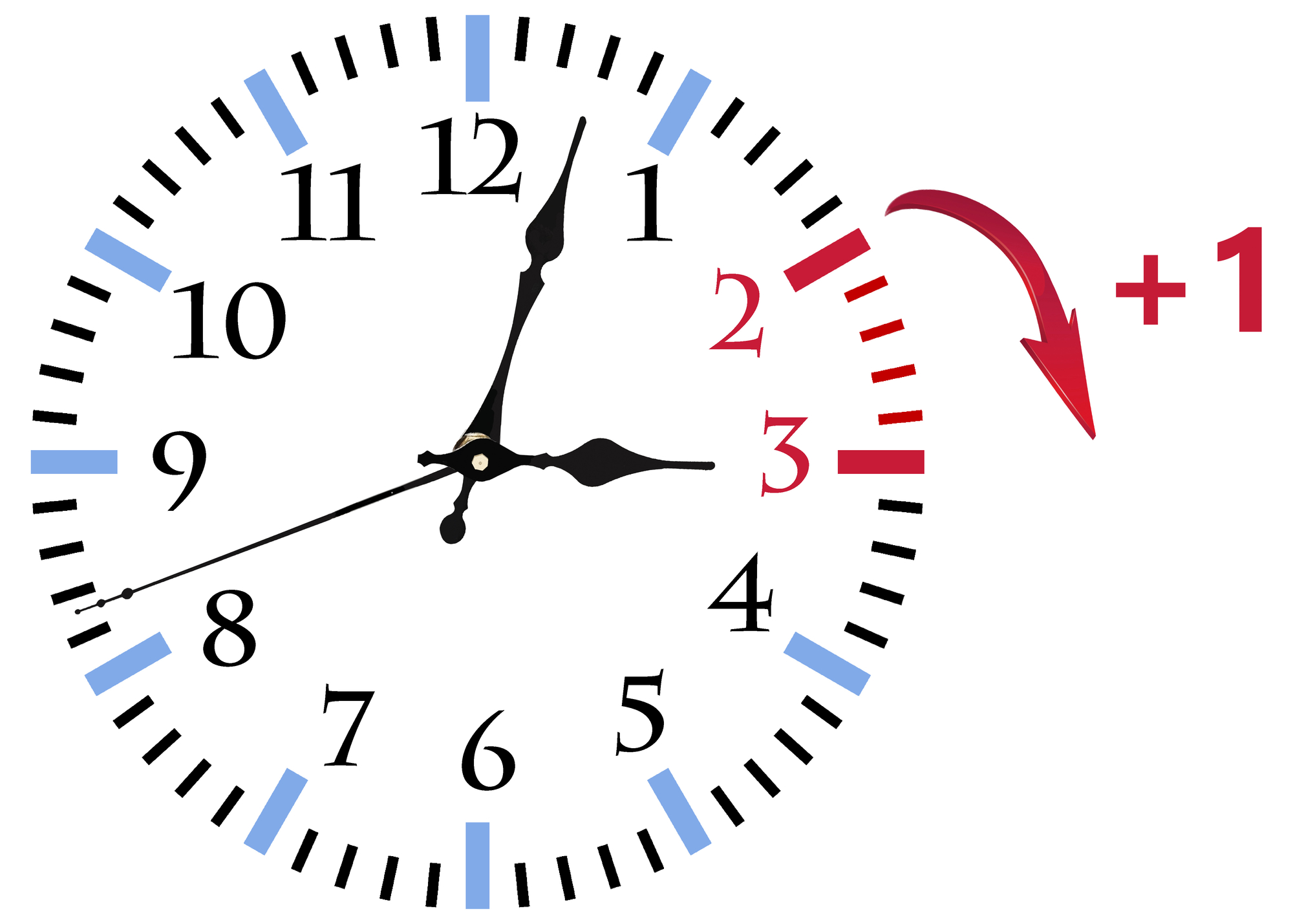
14. Be aware of the time differences. There are eleven time zones in Russia. The Trans-Siberian Railway will take you through eight time zones. To know local time is important especially if you break your journey and then have to take trains in other cities. 15. Don’t leave your valuable things unattended on train. In case you need to charge your gadget in the hallway keep an eye on your gadget while charging. 16. Respect your fellow passengers. Try not to be too loud. Use your headphones. Take your rubbish to the trash. Keep your space tidy. If you are on the bottom bunk, make your bed each morning and invite the passenger from the upper berth to sit there if they wish.
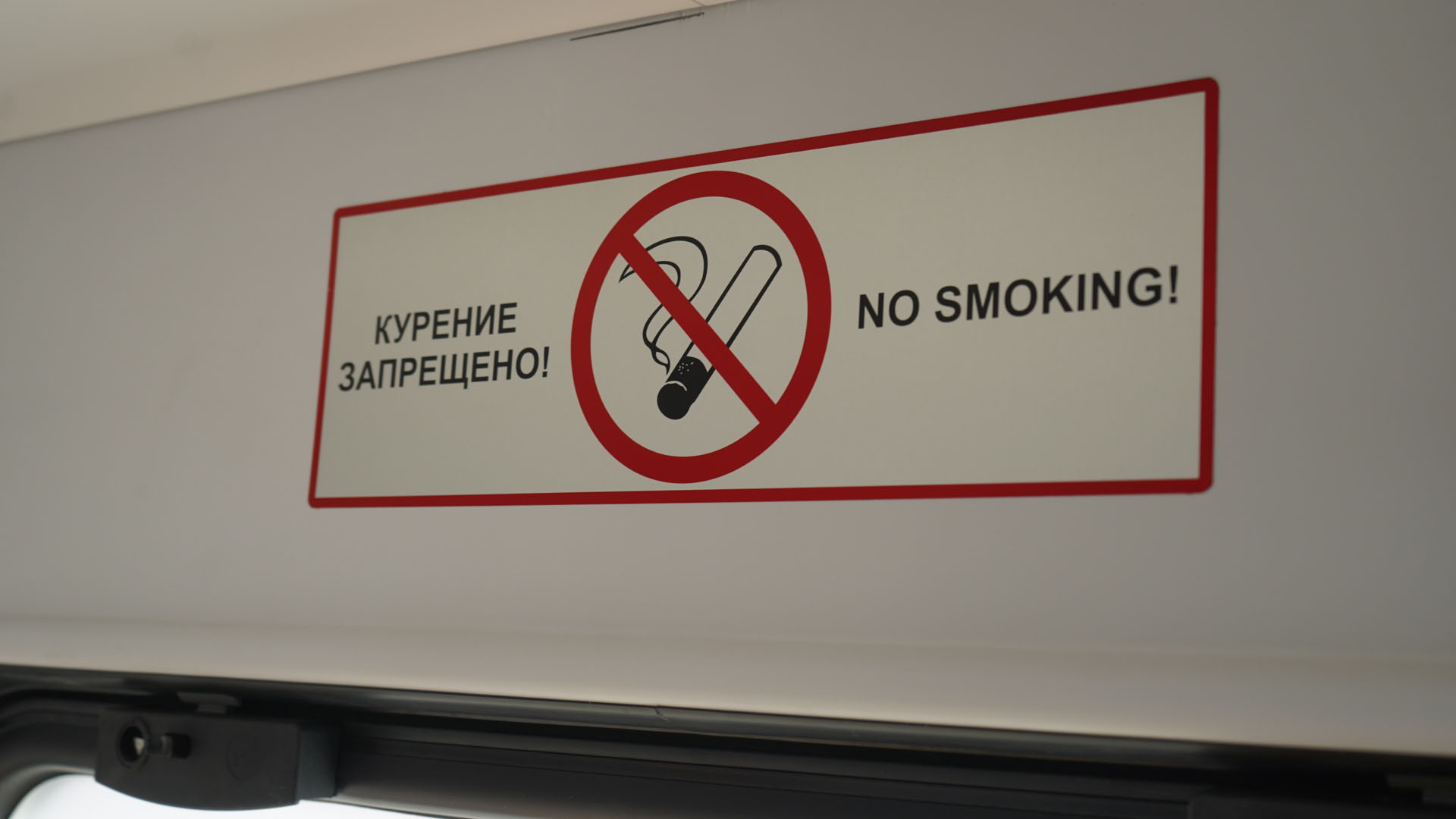
17. Don’t drink alcohol on train, especially with strange people. First of all it’s prohibited to consume alcohol on train. The only place on train where you can do it legally is dining car. Second it can be not safe and you can be an easy catch for swindlers. Though despite of existing prejudgments that all the Russians drink vodka when travelling by train usually it is not the case. The beloved drink of your Russian fellow travellers on train will be normally tea. 18. Smoking is prohibited on all the trains. You can smoke outside of the train during the stops. But it’s prohibited to smoke at the train stations and the distance from the train station where you can smoke should be not less than 15 miters.
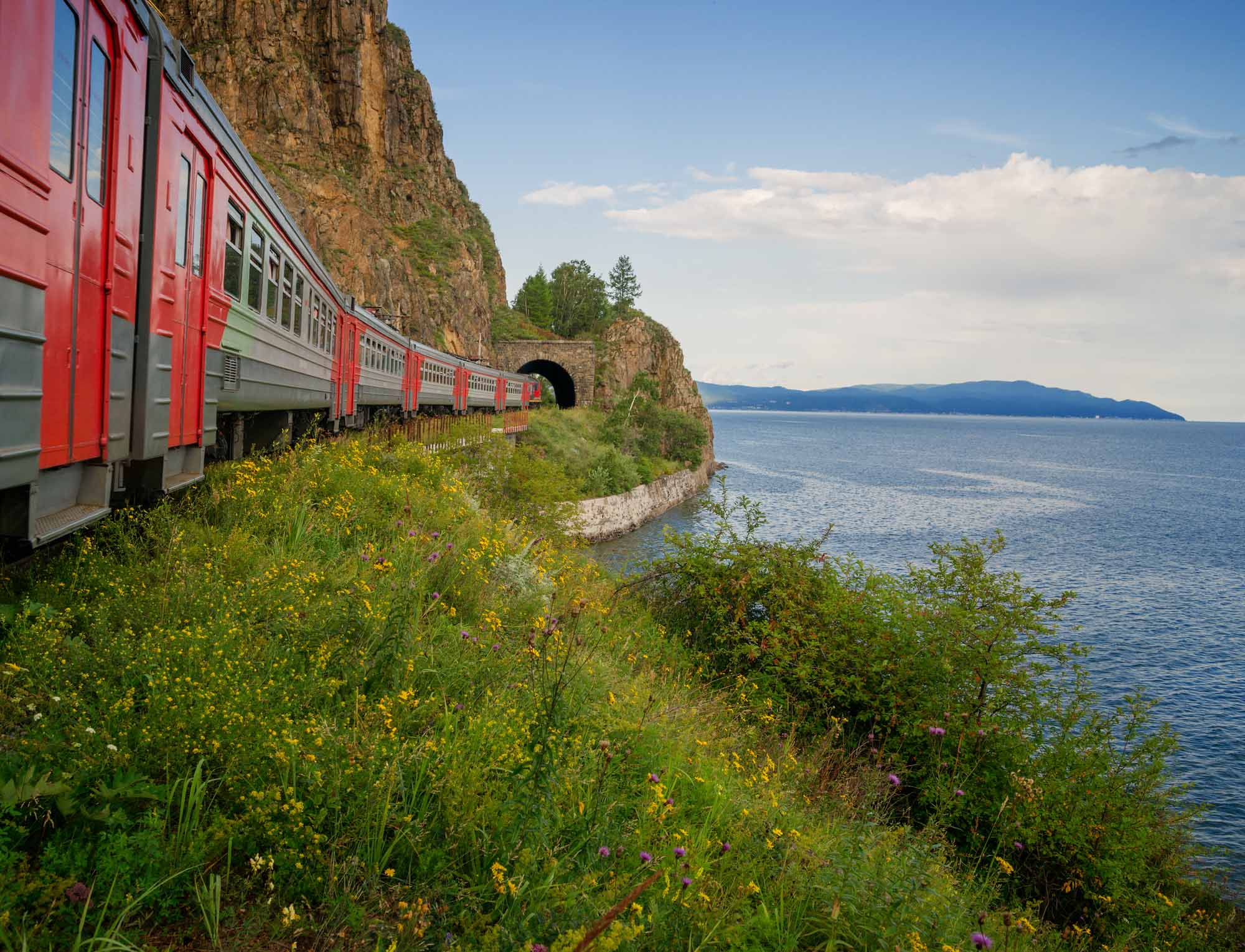
19. Stick close to the train at station stops. Some of the stops last just a couple of minutes, so in this case you’d better stay on train and leave it only during longer stops. There is not much warning given before the train leaves the station and all announcements are mostly in Russian. The train can easily leave the train station without you. So, be careful. 20. When leaving the train during a stop have all your documents, train ticket, telephone, money, cards and other valuables with you. If it happens, you miss your train, it will be easier for you to undertake the next actions and escape bigger problems.
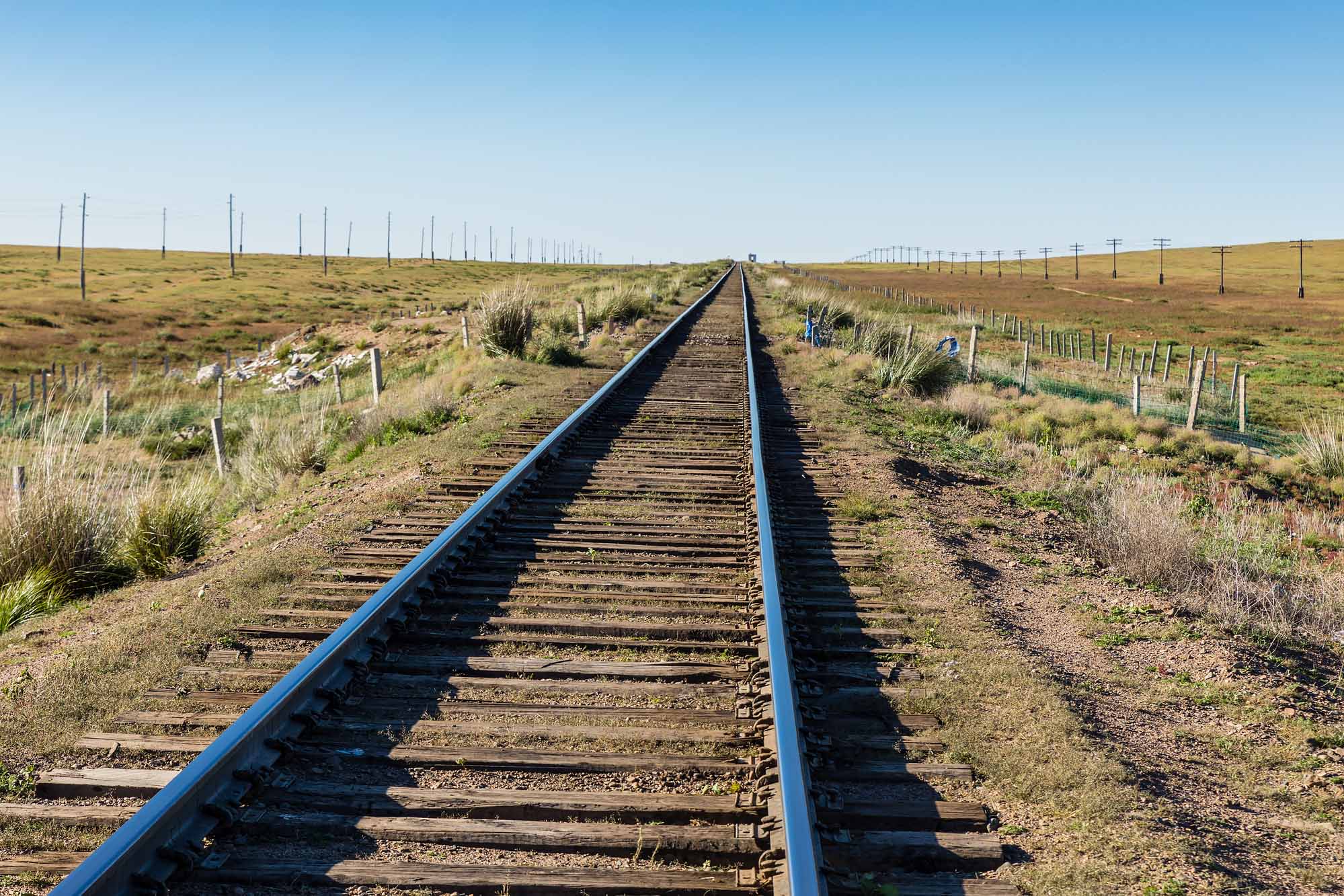
21. In case you are behind your train you have to go to the chief of the station where you stopped. He or she will message the nearest station where your train stops and your baggage will be taken from the train and brought to the Lost and Found of the nearest station. Then you will get a ticket to the next station (usually against reservation fee) where you get your baggage and you can continue your journey. 22. In case you left your things on train we recommend you to apply to the Lost and Found of the terminal station of the train you traveled. All the lost things are kept at the Lost and Found of the train station during 30 days. You have to produce your ticket and passport and to describe in details what you have lost. There is also a possibility to fill in a lost and found e-form on the site of the Russian Railway. The passenger will be informed regarding the search results of the lost items.

23. In case you feel unwell on train and your medical kit doesn’t help firstly inform the carriage attendant. The attendant will message the first-aid post of the nearest station and when the train stops there a doctor or a medical assistant will arrive. You can be offered to leave the train with the doctor. Just remember the budget health system in provincial towns and villages is not too good. You can refuse to leave the train and continue your journey. In this case your health condition should be checked on train by local medical assistants at the next stops.
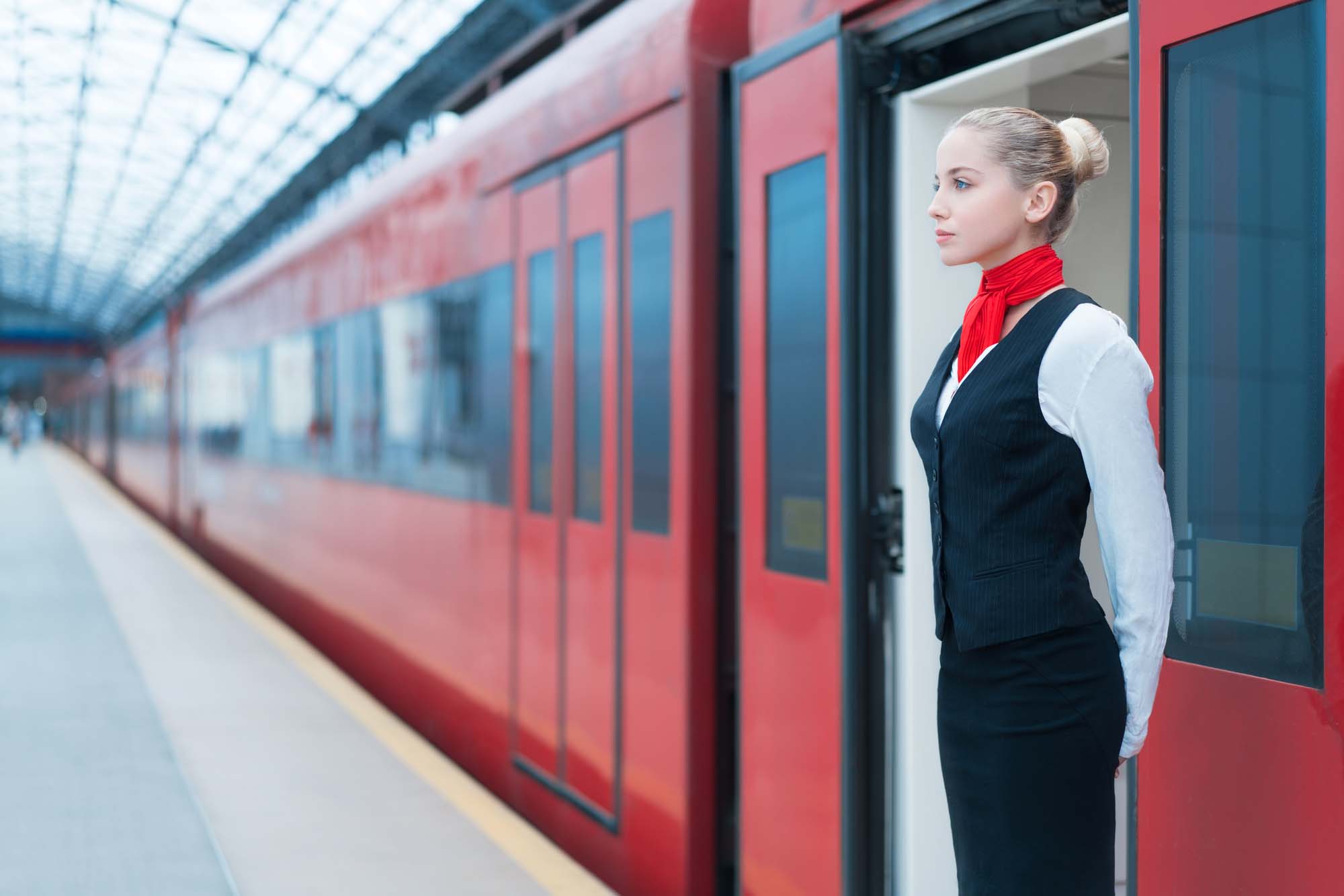
24. In case you notice something from your belongings is stolen, your first step is to address your carriage attendant. The attendant will call police and they will get on train on the next station. You describe what happened and draw up a statement where you indicate what was stolen and its approximate value, where it happened, witnesses (if you have). The police may conduct a search on the train. If your passport was stolen you have to receive from the police a reference statement that you applied to police because of your lost passport. You will apply with this document to the consulate of your country where you receive a certificate allowing you to leave Russia. 25. Your best friend on train should be carriage attendant. If you need any information or have any issue you can address the attendant any time. Mostly carriage attendants are female. Normally attendants speak only Russian.

Travelling by Transsiberian Railway is a great opportunity to taste cuisines of different regions of Russia which have their own peculiarities. One of the main gastronomic symbols of Russian cuisine is blini – Russian pancakes traditionally served with caviar, sour cream or jam. There are also blini with different fillings such as meat, quark.

Russian cuisine is characterized by great amount of different soups. Borscht (soup with fresh cabbage, beet and tomato usually improved with sour cream) and shchi (fresh or sour cabbage soup often with mushrooms) are well-known as typical Russian dishes. It is quite correct for shchi but place of origin of borscht is Ukraine. Any case borscht became very popular dish in Russia, Poland, Byelorussia, Lithuania, Romania. Very popular are also ukha (fresh fish-soup), solyanka (meat, fish or mushroom soup where traditional ingredients of shchi are combined with different sour, salty and piquant ingredients: pickled cucumbers, olives, capers, lemon, kvass, salted or pickled mushrooms), rassolnik (traditional soup made of pickled cucumbers, pearl barley and pork or beef kindeys), sorrel soup, svekolnik (cold beet soup), okroshka (cold kvass soup with chopped vegetables and meet), vzvar (sweet soup with dried fruits).

If kvass was mentioned we recommend you to taste this traditional for all Slavic and Baltic peoples and very popular in Russia fermented drink. The following drinks are also widely spread: kissel (viscous fruit dish popular as a dessert and as a drink), mors (non-carbonated traditional Russian fruit drink prepared of berries, mainly of red bilberry and cranberry), honey drinks (medovukha, sbiten).
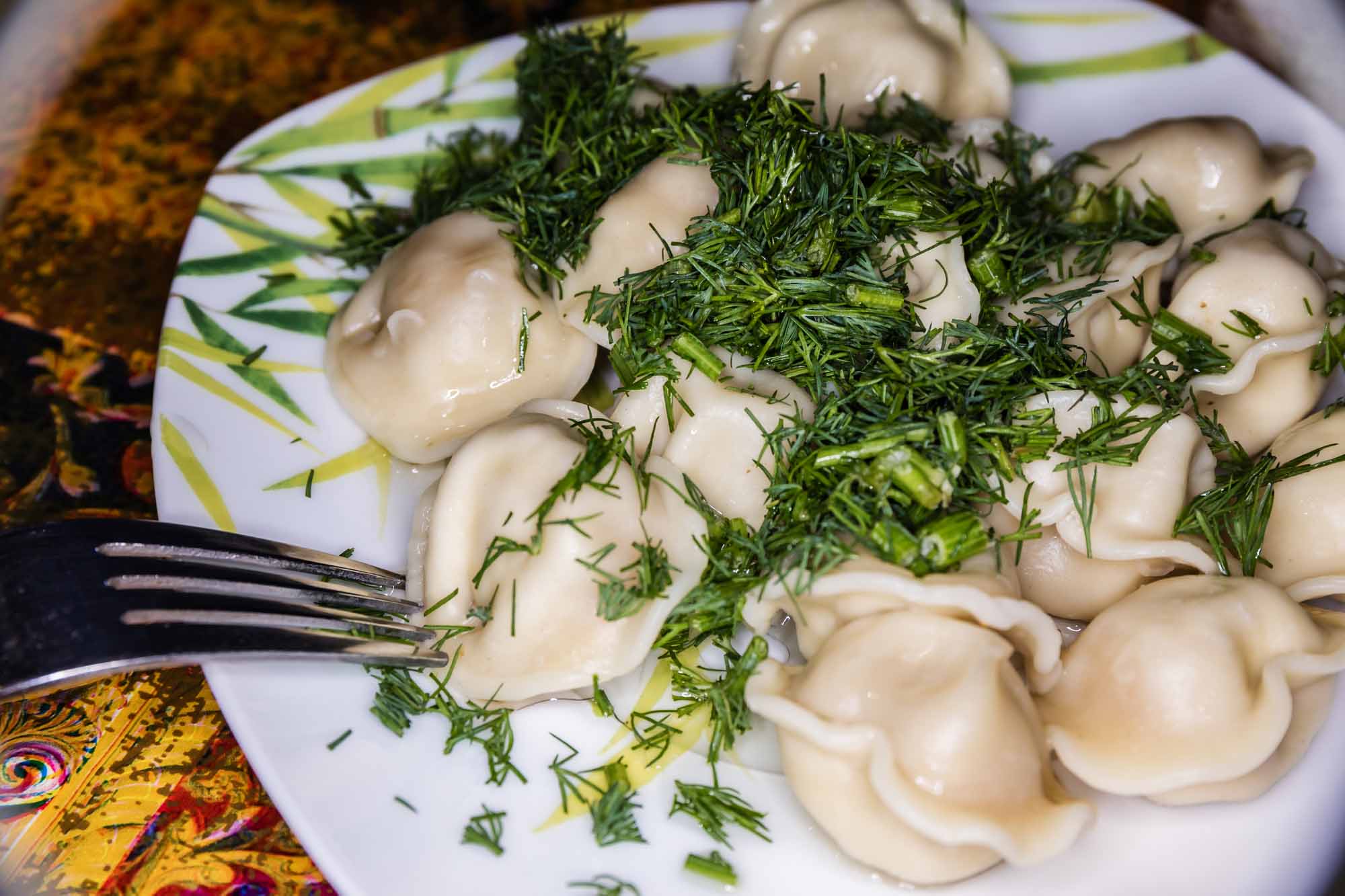
The next very popular in Russia dishes are golubtsi (cabbage rolls filled with meat and rice and usually served with sour cream – East Slavic variety of dish very popular at the Balkans, the Caucasus, West and Central Asia) and pelmeni (meat dumplings – traditional dish of Finno-Ugric peoples usually served with sour cream or with oil and vinegar; different varieties of it are popular in China, Korea, the Caucasus, Italy, South Germany, Crimea, Central Asia), studen or kholodets (Russian variety of aspic — meat-jelly known in Germany, Poland, Ukraine, Latvia, Romania, Bulgaria, Serbia).
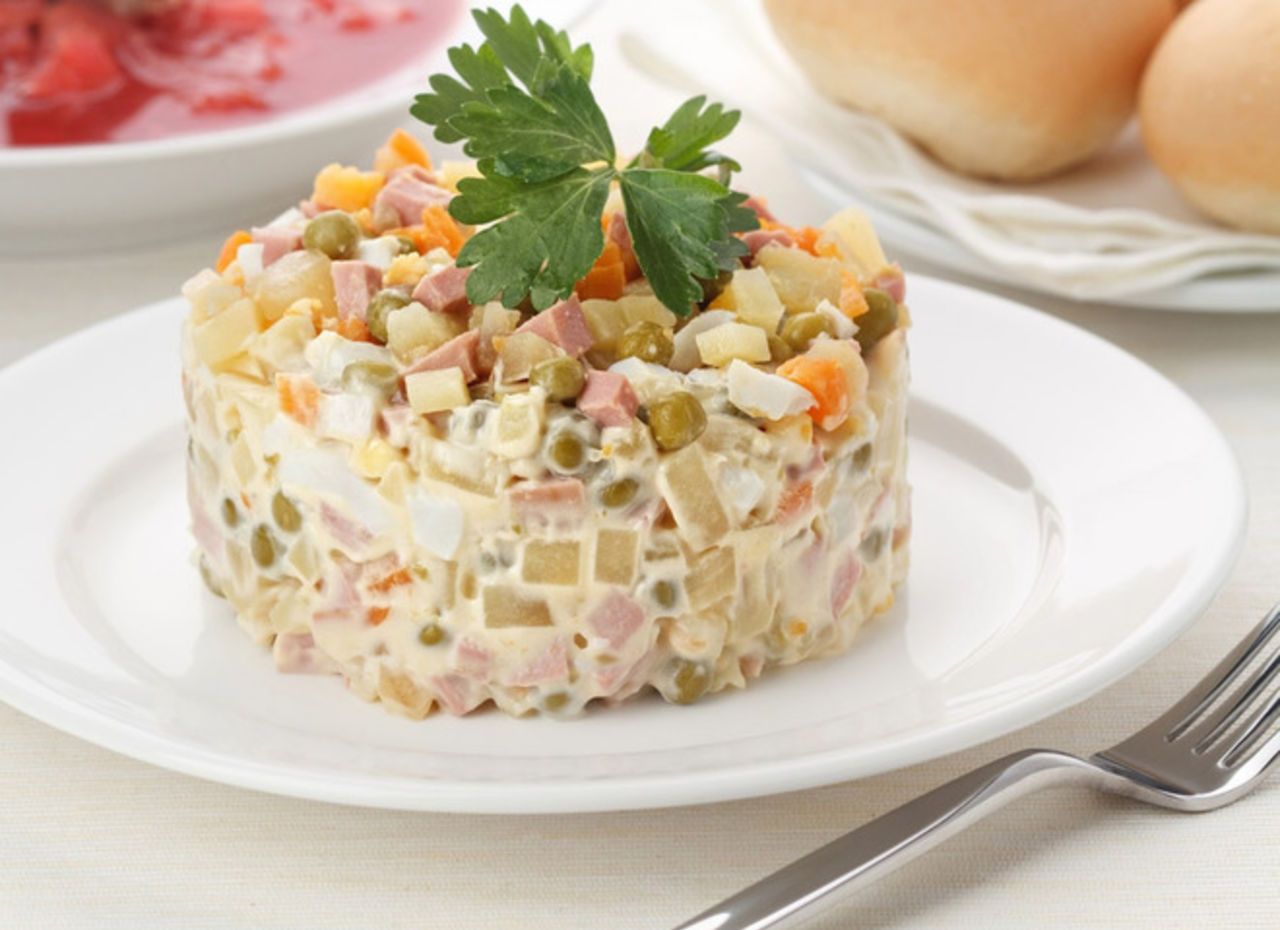
Well-known the Russian salad (meat, chicken, crabs or sausages with potato, green peas, pickled cucumbers and boiled eggs thickened with mayonnaise) was created not long ago (the end of the XIX c.). In Russia this dish is called the Olivier salad but many investigators consider that the owner of Paris cuisine the Hermitage Restaurant in Moscow Lucien Olivier, cook of Belgian origin, was shocked when Russian diners began to cut and mix ingredients of his dainty Russian Snack (originally there were abdomens of crayfishes, baked pork, black caviar, pickled cucumbers and green peas laid out separately on the big dish) and eat this mash thickened with mayonnaise!

When making a stop in Kazan you will have a chance to try Tartar cuisine. One of the major Tartar dishes is echpochmak (it means in Tartar “triangle”). It is a simple pastry containing yeast dough, meat, onion, cubed potatoes. The pyramid-shaped pastry is baked in the oven. The triangles are stuffed with different kinds of meat, while the best combinations are beef and duck and mutton and goose. Don’t miss to try the most iconic Tartar dessert called chak-chak. This dessert was originally served at weddings and festivities. It is a flour sweetness made from deep-fried dough pieces mixed with honey syrup sometimes decorated with nuts and dried fruit. One more Tartar delicacy is kazylyk. It is horse meat sausage commonly prepared cured, spiced with cumin and coriander.
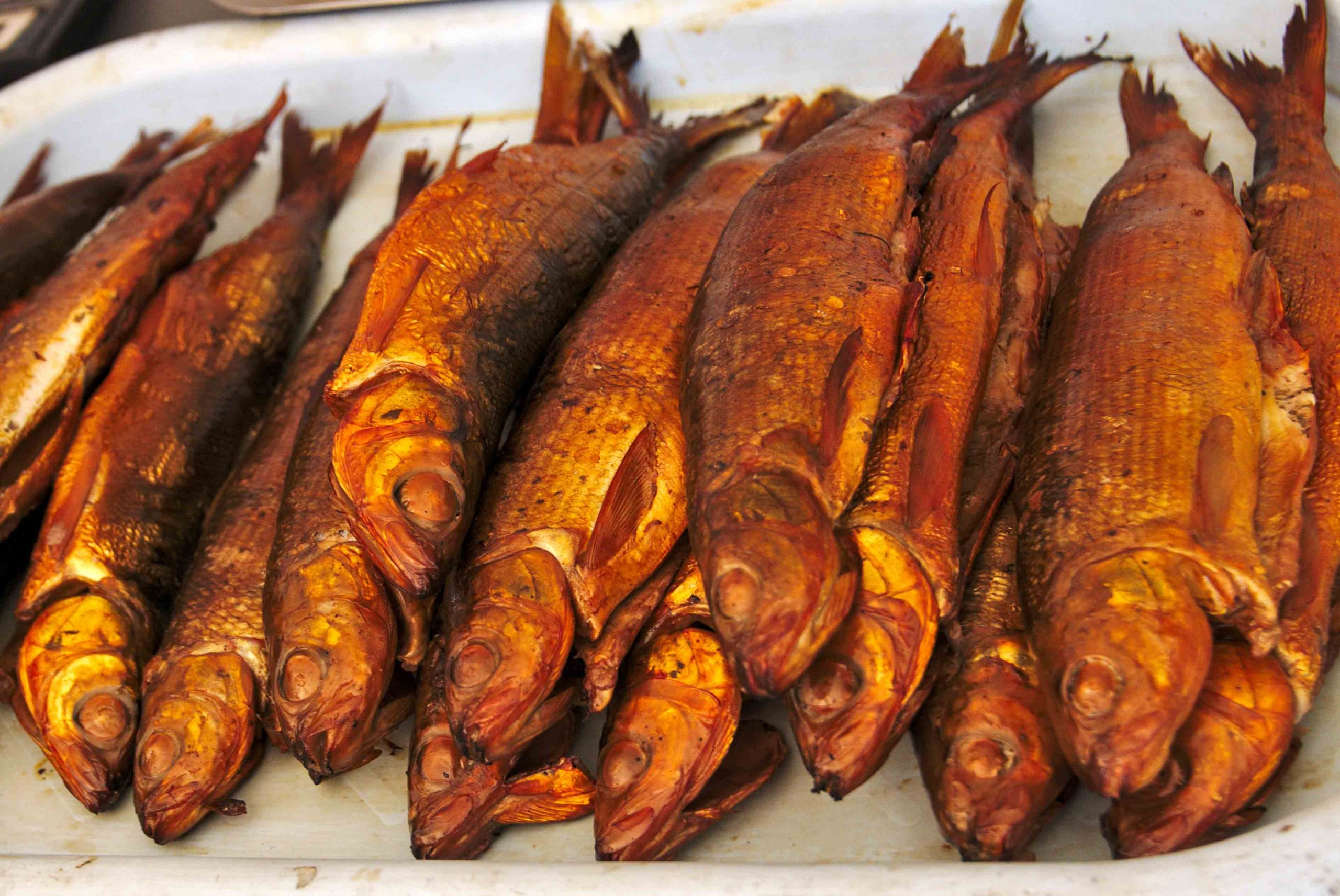
If you stay at the Lake Baikal area this is absolutely necessary to taste the Baikal omul, fish inhabiting at the Lake Baikal only. All local restaurants and cafe offer a lot of original dishes made of omul. Cedar nuts and the roasting of the cedar nuts in chocolate, balms infused with local medicinal herbs and herbal teas are also very good edible souvenirs from the Lake Baikal area.
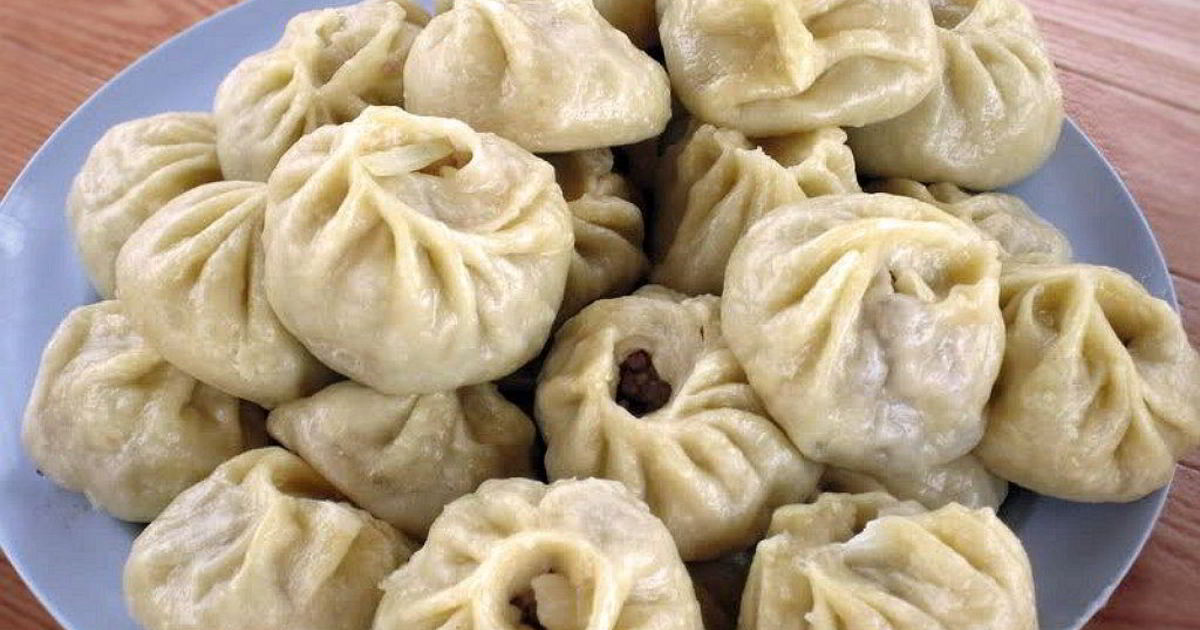
When making a stop in Ulan-Ude you can try traditional Buryat cuisine. The most popular Buryat dish is Buuz – steamed dumplings filled with meat (beef with pork or beef with mutton) or its fried version — Khuushuur. Following dishes of Buryat national cuisine are also recommended: Buukhelyor (soup with large pieces of meat), soup with fine noodles, sausages made of offal, blood sausages, Urme (grated bird-cherry grades with sugar and sour cream), Boove (sweet fried buns), traditional green tea with milk.

And finally when you get to Vladivostok you can try seafood. There are enough restaurants in the city that can serve you fresh and tasty seafood dishes among them Kamchatka crab, scallops, sea cucumber, Ussuriysk solyanka (a salad made from sea cabbage, chopped calamari, onion and carrot) etc.

Please check attentively customer regulations and regulations of food products import to your country if you decide to purchase gastronomic or antiquarian souvenirs. Please try to buy antiques at specialized shops providing their customers with special certificates for presenting at the Custom-office. Smoked fish is to be vacuum-packed. Your local guide will recommend you places where you can purchase original authentic souvenirs and safe food products available for transport to your country.
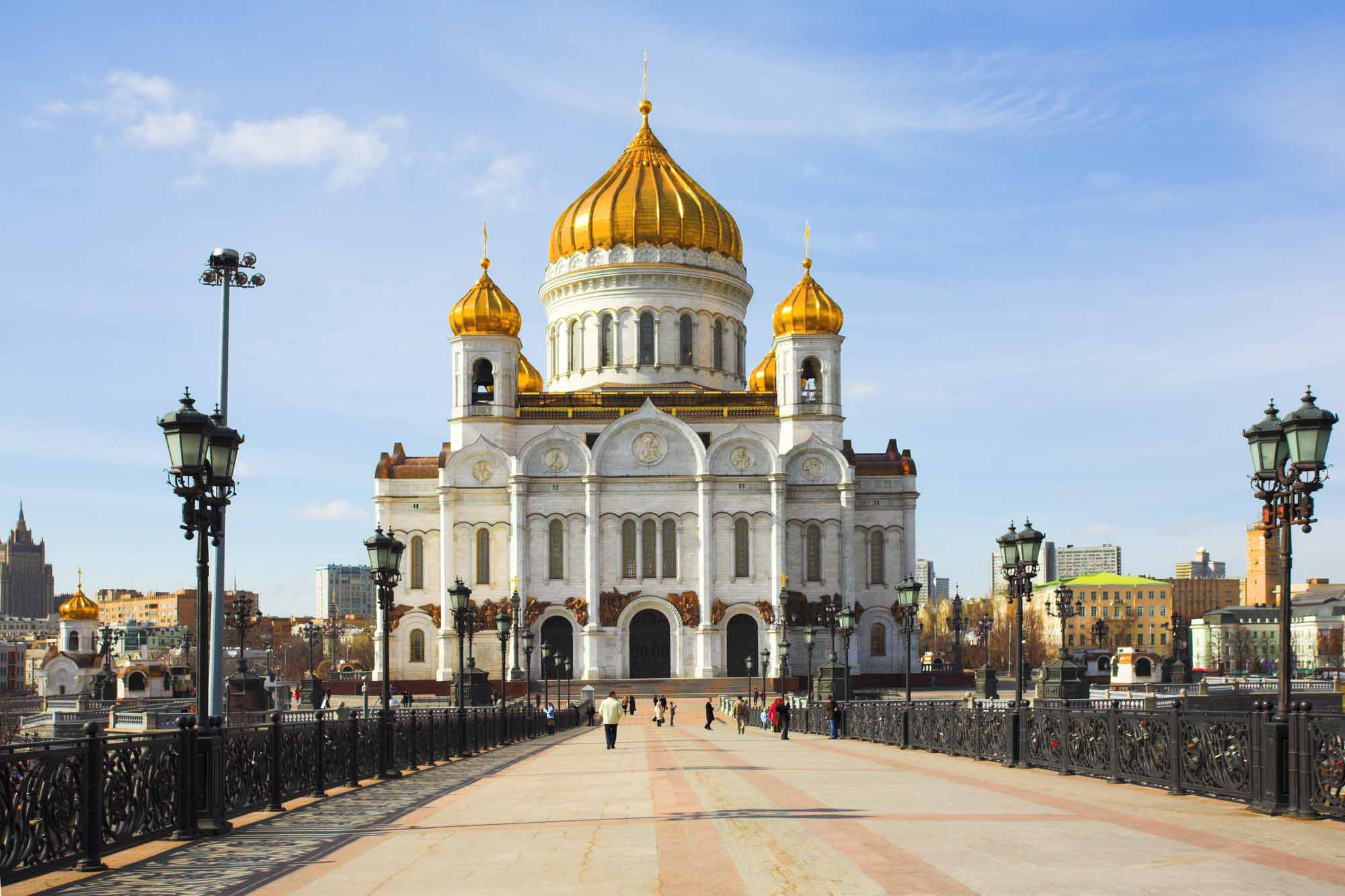
We kindly pay your attention that a lot of architectural monuments on the Golden Ring are functioning churches and monasteries of the Russian Orthodox Church so we kindly ask you observe regulations and traditions of this structure visiting such objects. Visiting of churches and functioning monasteries in shorts and t-shirt is not permitted. Ladies visiting Russian Orthodox functioning monasteries should have skirts below the knee and head scarfs.